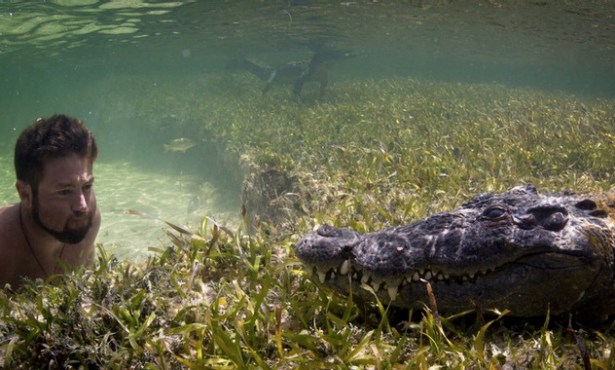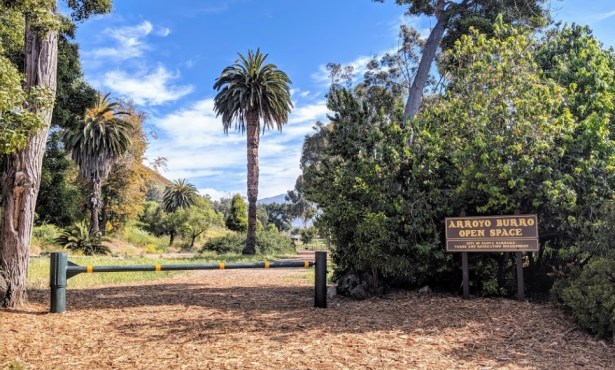Why I Love Long Walks on the Beach
A Lifetime of Exploring and Exercising on the Sand, from Santa Cruz to Santa Barbara

Long walks on the beach shouldn’t just be the punchline to dating jokes.
From as young as I can remember, wandering my tiny feet across the shores of Santa Cruz, to just last week, when I hoofed it for more than an hour along the Ellwood Coast, I’ve used them for exercise, for exploration, for clearing my head, and for connecting with nature in its most subtle and violent manifestations. Seaside strolls are also an easy way to get away from crowds — even on the busiest of beach days, walking in one direction long enough opens up untouched coves, calmness amid holiday weekend chaos, and sandscapes whose contours remain free from others’ footprints.
My baptism in the practice came in Capitola, where my parents bought a tiny studio right across the street from the beach back in 1980, before Silicon Valley exploded that real estate market. The village was already home to a crowded beach, but if you went past the jetties and walked below the cliffs toward New Brighton, there wasn’t a soul around. I vividly recall my dad and me on one such walk, poking our toes at what looked like an orange brick only to have it recoil in spongy slime, my first visceral lesson that all may not be what it seems.

Of course, that walk, like so many worthy beach strolls, must be timed with a low tide. I learned as much a little bit later in life, my Pearson Arrow sweatshirt fully drenched by sandy saltwater as my cousins and I ambled over the jetty rocks to escape the rising waves. Generally speaking, tides around the full moons are most dramatic, but any smartphone or one-second web search will deliver exact tide times on demand.
Last week, when I checked the tide while considering a beach walk, it said 10:09 a.m., which also happened to be the exact time that it was. I took that as a sign, grabbed my sneakers — sometimes I’ll go barefoot, but my aging feet need some support on longer walks — and drove up the coast a bit.
I checked my clock when reaching the sand, not due to the tide, which was still super low, but because I like noting how long it takes me to get to wherever I turn around. Then I know what to plan for next time, and how long I might have to haul a wagon full of beach toys should I wish to return to a secret cove or driftwood shack with family and friends one day.
It was a typically overcast “May gray” morning, which added a misty mystery to the experience. I never mind a sunny beach walk either, especially when ending with a quick dip, but this was a contemplative stroll. Walking at a brisk pace, I wondered what the orange, pimpled sheaths of dying life were scattered across the tideline — sea pickles, I later found out — and assessed from afar the relative health of birds acting oddly, like the heron precariously perched on a rock just inches above the rising waves and the drunken cormorant looking confused in the foam.
While “long walks on the beach” call to mind peace and tranquility, the seashore is really one of the most violent places on the planet, where endless ocean energy constantly collides with the stubborn land, powering an eternal cycle of turmoil and turnover. The smell of death is common — accompanied by a mottle of feathers and bird bones here, a lump of oily seal skin there — and the animals that do survive in this chaos literally cling to life while enduring all sorts of harassment: anemones so often squished by human feet and fingers, mussels bothered by creatures of all orientations. Though not just clingers, tiny crabs scurry with rueful anxiety, their tiny pinschers an inconsequential defense to the greater forces above.
Nor are beach walks really about pristine landscapes, at least for much of the California coastline, where development dreams have sparked and faded for centuries, abandoning much infrastructure in their wake. There’s something romantic to those old forms of trash — why a pier here? What’s that chunk of metal protruding from the cliff? — but that doesn’t hold true for the more recent additions, like faded Ruffles bags, occasional cigarette butts, the dreaded Mylar balloons. Do you part by tossing those in your bag if you’ve got room.
What about collecting pretty things, like seashells and beach glass and oddly shaped rocks, some of which could have been molded by generations of the Chumash people? Be aware of where the marine protected zones are, because you’re not supposed to take from them, but then just choose wisely and fairly. I’d be lying if I claimed that my family didn’t glean the seashore from time to time — there’s shell-scapes on the dashboard of our truck, throughout our front and back yards, even in our bedrooms — but I’ve grown more choosy with age. On last week’s walk, I picked up just one tiny shell, whose iridescent shine caught my eyes from afar.
There’s a meditative pace to watching beaches alone, but there’s also plenty to be said about doing it with your partner, or your parents, or your kids. My son finding an octopus in a Gaviota tide pool was a bright highlight in the early days of the pandemic, and my daughter imagining mermaids off of Coal Oil Point never gets old. Even my wife still shrieks when spotting dolphins and the occasional whale. Beach walks offer a brand of magic that never wears off, even if the only real rewards are what you manage to remember.
Support the Santa Barbara Independent through a long-term or a single contribution.




You must be logged in to post a comment.